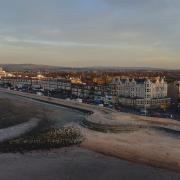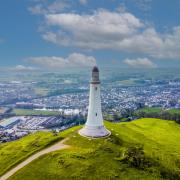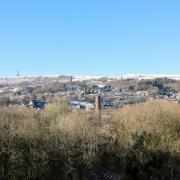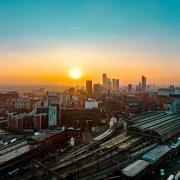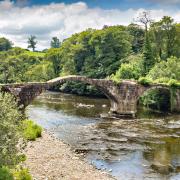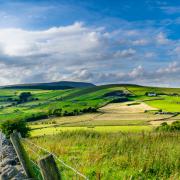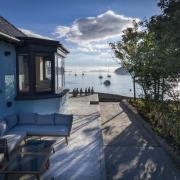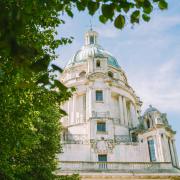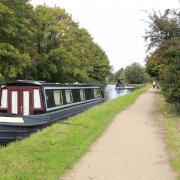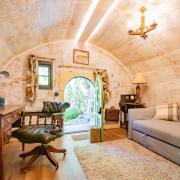The 1800s were a busy time for builders of lighthouses which were constructed at a remarkable rate around the UK coast.
Our treacherous stretch of coast, where strong winds and rough seas caused many vessels - and many more lives - to be lost, was light by blinking lights from Walney Island to Hale.
Now, those lighthouses which have stood strongly and stoically in the face of storms, rhythmically pulsing their light over the dark and dangerous sea, are being celebrated by an Irish artist captivated by the coast.
In early 2017 Roger O’Reilly started illustrating some of the lighthouses along Ireland’s southern coast in the style of railway posters of the 1930s and 40s. His collection grew into a best-selling book, Lighthouses of Ireland.
And after a holiday in Cornwall he started painting lighthouses around the British coast and now has a collection of more than 350 lighthouses, some of which will appear in Legendary Lighthouses of Britain which is due to be published by Watkins early next year.
Roger said: ‘While at their core, these structures are simply towers and beacons, our lighthouses have captured the imagination in a way that few other buildings have. Maybe it's the idea of strength and resilience, a guiding light in the darkness, that feels so relevant in our challenging times, but everyone seems to have a favourite.
‘The lighthouse represents a unique part of our maritime history and an aesthetically pleasing part of our built heritage. Long may they continue to shine.'
To see more of his work, and buy signed prints, go to lighthouseeditions.com.

Pharos Lighthouse, Fleetwood
In the early 19th century, the architect Decimus Burton was commissioned by Sir Peter Hesketh to draw up plans for a new resort town and port on the Lancashire coast that would eventually become Fleetwood. Although Hesketh went bankrupt attempting to bring his vision to life, a good portion of his ambition for the town was realised and in the process, Burton completed designs the town layout, the North Euston Hotel and by 1839, in conjunction with Capt H.M. Denham, the two lighthouses we see today.
The Pharos or Upper Lighthouse, stands 28m tall and is built of Runcorn red sandstone and set on a square stone base. Its location in the middle of a street and beside tram tracks is rather unusual and belies its function as the rear of two leading lights designed to help vessels navigate safe passage in the often treacherous Wyre estuary.
For many years, the lighthouse displayed a bold cream and red colour scheme, but in the late 1970s, the tower was returned to its original bare sandstone. The lantern’s green flashing light is visible for 21km.
The lighthouse is managed by the Port of Fleetwood. Unfortunately, the interior is closed to the general public.

Morecambe Jetty Lighthouse
The Stone Jetty in Morecambe was built by the North Western Railway in 1853 as a wharf and rail terminal for passengers and freight. The lighthouse is the most southerly designed by the renowned Scottish lighthouse engineer, Thomas Stevenson, one of the acclaimed family of architects who between three generations built almost 200 lighthouses off Scotland’s coast. For Stevenson, it is a modest affair standing only eight metres high and was presumably a welcome respite from overseeing the building of sentinels in some of Britain’s most inhospitable waters.
By 1861 a railway line was completed from the Jetty to Hest Bank, where it linked in with the Lancaster to Carlisle line. This line brought in coal and coke from Durham and North Yorkshire for the expanding export trade to Ireland. For 40 years the port flourished, but with the development of the port of Heysham in 1904, trade with Morecambe rapidly declined, and by 1932 the railway yard had closed.
The harbour was eventually used for shipbreaking, one of its more famous victims being the White Star Liner, SS Majestic. As part of a major redevelopment scheme between 1994 and 1995, the Stone Pier was refurbished and partly rebuilt.

Plover Scar Lighthouse
Plover Scar Lighthouse, also known as the Abbey Lighthouse, is an active 19th century lighthouse at the entrance of the Lune estuary, near Cockersand Abbey.
The eight-metre-high lighthouse was built in 1847, and was the lower light of a pair of leading lights. The rear or High Light, known as Cockersand Lighthouse, once stood next to the Abbey Lighthouse cottage on Slack Lane. It was a square wooden tower supported by angled wooden struts. The two lighthouses formed a set of leading or range lights, guiding vessels through a channel into Glasson Dock and the Lancaster Canal.
The picturesque wooden High Light was demolished in 1954 and was replaced by a metal framework tower and by the end of the decade the lights were fully automated. The High Light was deactivated in the late 1980s but Plover Scar remains active.
From 1847 until 1945, Plover Scar and Cockersand Abbey lighthouses were attended to by the Raby family. Frances began the dynasty in 1847, followed by Henry and then Janet and her brother Richard. They were in turn succeeded by the Parkinson family who remained keepers for two generations until Plover scar was eventually automated.



